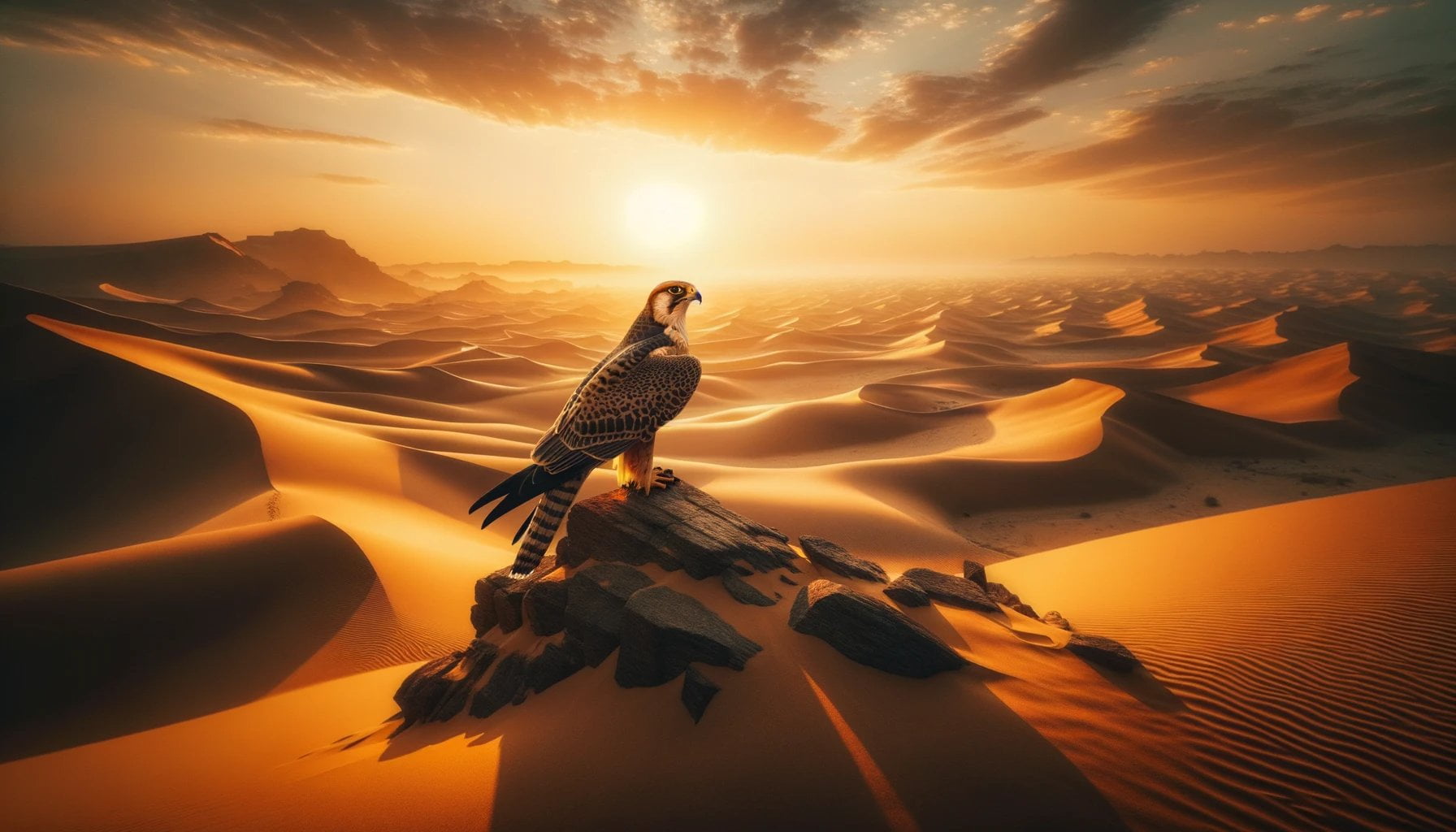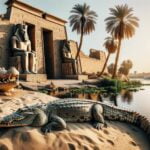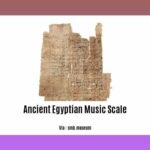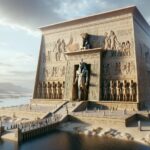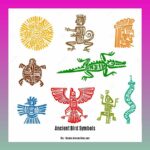Step into the mesmerizing world of ancient Egypt, where birds soared high and held a revered position in the hearts of its people. Blessed with an unparalleled wisdom in ornithology and a profound understanding of ancient Egyptian culture, we embark on a journey to unravel the captivating secrets behind the avian veneration in this revered civilization. From the majestic ibis to the sacred falcon, join us as we delve into the enchanting realm of birds and explore their profound spiritual significance in the glorious tapestry of ancient Egypt.
Key Takeaways:
- The ibis, a seabird indigenous to Africa, held great significance in ancient Egyptian civilization and was venerated in temples.
- The ibis was closely associated with Thoth, the god of wisdom and knowledge, often depicted with the head of an ibis.
- The mummification of ibises was a common practice, with mummified ibises being placed in pharaoh’s tombs as offerings to the gods.
- The veneration of birds played a significant role in ancient Egyptian culture, symbolizing the concept of life emerging from an egg.
- In addition to the ibis, other sacred birds revered by the ancient Egyptians included ducks, geese, flamingos, pigeons, and doves.
- The exhibit “Between Heaven and Earth: Birds in Ancient Egypt” at the University of Chicago’s Oriental Institute explores the impact of birds on ancient Egyptian religion, design, and the conception of the state.
Bird Venerated in Ancient Egypt
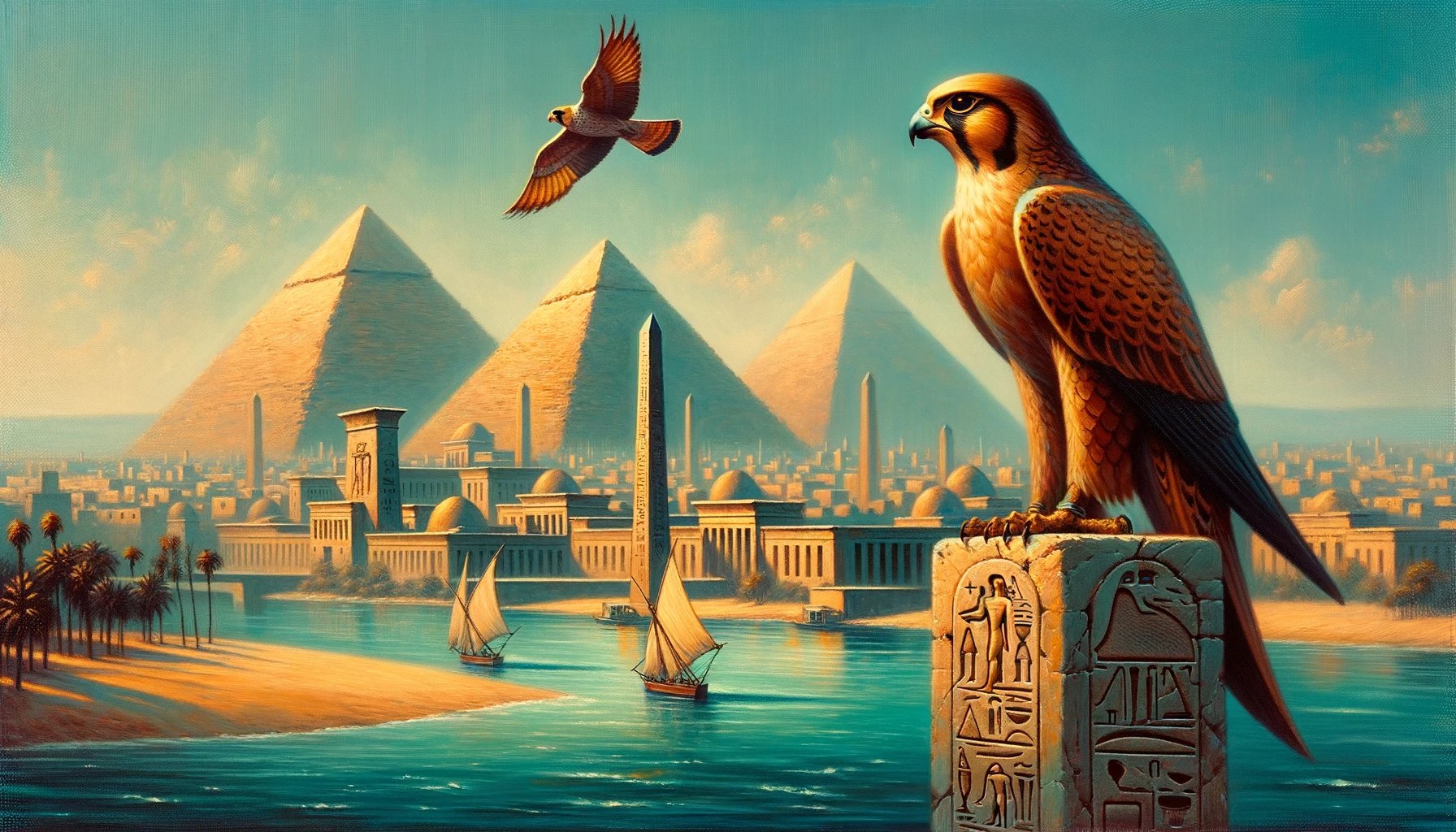
The ancient Egyptians held a deep reverence for birds, considering them sacred beings with spiritual significance. Among these revered birds, one species stood out in particular – the ibis. Originating from Africa, the ibis played a vital role in ancient Egyptian culture and religion.
The Significance of the Ibis The ibis held such importance that it was depicted on the walls of ancient Egyptian temples. This seabird was closely associated with the god Thoth, the deity of wisdom and knowledge. In art and mythology, Thoth was often portrayed with the head of an ibis, emphasizing the strong connection between the bird and the god.
Archaeological Discoveries The veneration of the ibis is further supported by archaeological findings. In pharaoh’s tombs, researchers have uncovered mummified ibises, providing physical evidence of the bird’s sacredness. These ibis mummies were meticulously prepared, with their internal organs removed and their bodies preserved using natron, a type of natural salt. Placed as offerings to the gods, these mummies illustrate the religious devotion of the ancient Egyptians.
The Influence of Greece and Rome The reverence for the ibis extended beyond the borders of Egypt, reaching the ancient civilizations of Greece and Rome. It is fascinating to consider that the ibis, with its association with Thoth, transcended Egyptian culture and became a symbol of wisdom and knowledge in other societies as well.
Other Sacred Birds While the ibis was of utmost significance, it was not the only bird revered in ancient Egypt. In fact, Egypt is home to a diverse avifauna, comprising around 500 species of birds. Birds such as ducks, geese, flamingos, pigeons, and doves were also venerated by the ancient Egyptians, contributing to the rich tapestry of bird symbolism in their culture.
Understanding the Cultural Importance Gaining insights into the veneration of birds opens a window into the cultural and religious identity of ancient Egypt. Birds were believed to play a crucial role in the conception of life, with the concept of all life emerging from an egg symbolized by a magnificent ancient ostrich egg. Through exhibits like “Between Heaven and Earth: Birds in Ancient Egypt” at the University of Chicago’s Oriental Institute, visitors can explore the profound impact that birds had on ancient Egyptian religion, design, and even the perception of the state. In conclusion, the ibis held an immense significance in ancient Egyptian culture. Venerated not only in Egypt but also in Greece and Rome, the ibis symbolized wisdom and connection to the god Thoth. The mummification of ibises showcased the religious devotion of the ancient Egyptians, while the diverse range of sacred birds emphasized the role of avian symbolism in their culture. By delving into the veneration of birds, we gain a deeper understanding of the cultural and spiritual traditions of one of the world’s greatest civilizations.
If you want to uncover the secrets of the supreme god of ancient Egypt, click here to dive into the fascinating world of Egyptian mythology.
Experience the enchantment of magic in ancient Egypt by clicking here and unraveling the mysterious practices and rituals of the ancient Egyptians.
Discover the Ten Laws of Ancient Egypt by clicking here and explore the ancient legal system that governed this extraordinary civilization.
Learn about the revered crocodile god of ancient Egypt by clicking here and delve into the beliefs and worship of Sobek, the powerful and feared deity.
Curious about ancient dental hygiene? Click here to explore the intriguing history of toothpaste in ancient Egypt and uncover their unique dental practices.
Explore the dark side of ancient Egypt by clicking here to discover the lesser-known aspects and controversies surrounding this captivating civilization.
Uncover the significance of black cats in ancient Egypt by clicking here and unravel the fascinating beliefs and superstitions surrounding these mystical feline companions.
Step into the world of ancient queens of Egypt by clicking here and learn about the remarkable women who held power and influence during this extraordinary era.
Satisfy your curiosity about the mysteries of ancient Egypt by clicking here and immerse yourself in the enigmatic and awe-inspiring secrets of this ancient civilization.
Slither into the realm of snakes in ancient Egypt by clicking here and discover the symbolic significance and cultural associations of these reptiles in Egyptian mythology.
Specific Bird Species Venerated in Ancient Egyptian Culture
Birds held a special place in the hearts and minds of the ancient Egyptians. Ducks, ibises, eagles, vultures, and falcons were among the many bird species revered in their culture. These avian creatures played a significant role, not only in their daily lives but also in their religious and spiritual practices. Let’s explore the fascinating world of birds in ancient Egypt and uncover the rich symbolism and cultural significance associated with these beautiful creatures.
The Sacred Ibis and Its Divine Connections
One bird that stood out in ancient Egyptian culture was the sacred ibis. This elegant bird was venerated and held sacred by the Egyptians for its association with the god Thoth, the deity of wisdom, knowledge, and writing. The link between the ibis and Thoth was so strong that it was often depicted on the walls of ancient Egyptian temples, showcasing its divine connection.
Archaeological findings have further substantiated the veneration of the ibis. In pharaohs’ tombs, thousands of mummified ibises have been discovered, indicating the religious devotion of the ancient Egyptians. These intricate mummifications demonstrated the reverence they held for this remarkable bird.
Avian Symbolism and Cultural Identity
Birds played a crucial role in shaping the cultural and religious identity of ancient Egypt. They symbolized various qualities and values that the Egyptians held dear. Birds were seen as a representation of freedom, knowledge, and divinity. Their ability to soar high into the sky resonated with the Egyptians’ aspiration for spiritual enlightenment and transcendence.
Not limited to just the ibis, other birds such as ducks, geese, flamingos, pigeons, and doves were also venerated. Each of these birds held its own symbolism and significance. Ducks were associated with fertility and creation, while geese were symbolic of loyalty and protection. Flamingos represented balance and grace, while pigeons and doves were seen as messengers of peace and love.
Birds in Egyptian Art and Hieroglyphs
The admiration and adoration for birds in ancient Egypt is evident in their art. Bird imagery is abundantly found in Egyptian art, serving as a visual representation of their cultural beliefs and traditions. Birds, including the sacred ibis, were depicted in hieroglyphic and Coptic scripts, further emphasizing their importance in written language.
“Bird behavior in ancient Egyptian art” is an intriguing study that delves deep into bird depictions in Egyptian art and hieroglyphs. These artistic representations not only showcased the beauty and diversity of avian species but also conveyed their symbolic meanings. Birds were utilized as protective symbols and decorative motifs, further demonstrating their significance in the visual arts of ancient Egypt.
The Impact of Birds on Egyptian Religion and Design
The influence of birds on Egyptian religion, design, and the conception of the state cannot be overstated. Their presence was deeply intertwined with their spiritual beliefs, and their imagery can be found in numerous temples, tombs, and religious texts. Birds added a layer of mysticism, awe, and reverence to the ancient Egyptian religious experience.
Between Heaven and Earth: Birds in Ancient Egypt, the first American exhibit devoted to birds in the Nile Valley, explored this profound impact. It shed light on the spiritual significance and intricate connections between birds and the ancient Egyptians. This exhibit was a testament to the dedication and passion the Egyptians had for their winged companions.
Key Takeaways:
- Birds, including the sacred ibis, were venerated in ancient Egyptian culture for their symbolism and divine associations.
- The sacred ibis played a vital role in Egyptian culture and religion, particularly as a symbol of wisdom and connection to the god Thoth.
- Birds in ancient Egypt symbolized freedom, knowledge, divinity, fertility, loyalty, grace, and peace.
- Egyptian art and hieroglyphs extensively featured bird imagery, showcasing their cultural significance.
- Birds had a profound impact on Egyptian religion, design, and the conception of the state, adding a layer of mysticism and awe.
Sources:
1. The New York Times – Birds in Ancient Egypt Were Mummified as an Offering to the Gods
Role of Birds in Religious Rituals and Ceremonies
Birds held immense significance in ancient Egyptian culture and were deeply intertwined with their religious rituals and ceremonies. Let’s delve into the captivating world of avian veneration in ancient Egypt.
The Sacred Connection Between Birds and Ancient Egypt
Ancient Egyptians revered birds and considered them sacred beings. Birds represented power, protection, wisdom, and fertility, serving as messengers and guides between the mortal world and the divine realm. They were closely associated with gods, goddesses, and important aspects of life and beliefs.
The veneration of birds in ancient Egypt is vividly depicted in the exhibit “Between Heaven and Earth: Birds in Ancient Egypt.” This exhibition explores the profound impact that birds had on ancient Egyptian religion, design, and the conception of the state. Notably, the exhibit highlights the veneration of bird mummies in religious practices.
The Fascinating World of Bird Mummies
Mummification was not limited to ancient Egyptians themselves; millions of birds were also mummified. Intriguingly, DNA analysis has revealed that these mummified birds possessed a genetic diversity similar to that of present-day wild populations in other parts of Africa.
Ancient Egyptians mummified birds from a staggering 183 species, recognizing their sacred and symbolic value. These mummified birds were carefully preserved and often placed in pharaohs’ tombs. The mummification of birds showcased the religious devotion and reverence that the ancient Egyptians had for these winged creatures.
Avian Symbolism and Representation
Birds played a crucial role in ancient Egyptian religious beliefs and daily life. They were depicted in hieroglyphic and Coptic scripts and used as protective symbols and decorative motifs. Additionally, birds were even consumed as food, highlighting their practical role in ancient Egyptian society.
Identifying birds based on their physical characteristics was essential in ancient Egypt. Ducks, geese, flamingos, pigeons, doves, and other bird species were also venerated by the ancient Egyptians, exhibiting the diverse range of sacred birds and emphasizing the significance of avian symbolism in their culture.
Exploring Bird Veneration in Ancient Egypt
Birds, especially the ibis, held immense significance in ancient Egyptian culture and religion. The ibis, originating from Africa, played a vital role and was closely associated with the god Thoth, the deity of wisdom and knowledge. The walls of ancient Egyptian temples often depicted the ibis.
The veneration of the ibis transcended Egyptian culture and extended into ancient Greece and Rome, where it became a symbol of wisdom and knowledge. However, the ibis remained a significant cultural icon in ancient Egypt and continued to be deeply revered.
Key Takeaways:
- Birds held deep significance in ancient Egyptian culture, symbolizing power, protection, wisdom, and fertility.
- The exhibit “Between Heaven and Earth: Birds in Ancient Egypt” highlights the veneration of bird mummies in religious rituals.
- Ancient Egyptians mummified millions of birds, with DNA analysis revealing genetic diversity akin to present-day African populations.
- Birds were used in hieroglyphic and Coptic scripts, as protective symbols and decorative motifs, and as a food source.
- The ibis, closely associated with the god Thoth, played a vital role in ancient Egyptian culture and religion.
Archaeological Evidence and Depictions of Birds in Ancient Egyptian Art
Birds in ancient Egyptian art hold a significant place, reflecting the deep admiration and reverence the ancient Egyptians had for these winged creatures. Their artistry depicted birds with such meticulous detail that researchers today can identify the exact species depicted in these ancient murals. Through archaeological evidence and depictions in their artwork, we can gain valuable insights into the bird veneration in ancient Egypt.
Birds: A Profound Presence in Ancient Egyptian Art and Religion
The exhibit titled “Between Heaven and Earth: Birds in Ancient Egypt” beautifully captures the profound impact of birds on ancient Egyptian culture. This showcase of artifacts and artwork brings to light the relationship between birds and religion, design, and the conception of the state. With careful exploration, archaeologists have unearthed a wealth of knowledge about the significance of birds in the ancient Egyptian civilization.
Unraveling Ancient Secrets: A 3,300-year-old Mural
Amidst the sands of time, archaeologists uncovered a remarkable find—a well-preserved mural from a 3,300-year-old Egyptian palace in Amarna. This mural, adorned with intricate details of birds and wildlife, is a testament to the skill and observation of ancient Egyptian artists. Through the artistry of these paintings, we gain a glimpse into the avian world revered by the ancient Egyptians.
Decoding Ancient Imagery: Identifying Avian Species
The ancient Egyptian paintings of birds are so detailed that researchers can even identify the exact species portrayed in them. Rock pigeons were among the bird species depicted in the ancient Egyptian mural found in Amarna. By analyzing these artistic representations, we can unlock a wealth of knowledge about the avifauna present in ancient Egypt.
Symbolism and Spiritual Significance
Birds played a pivotal role in shaping the religious beliefs and daily life of the ancient Egyptians. These creatures were considered symbols of life itself, and their importance was underscored by an ancient ostrich egg in the exhibit, symbolizing the belief that all life emerged from an egg. The veneration of birds in ancient Egypt went beyond their physical presence. They were seen as bearers of wisdom, divinity, fertility, and protection.
Key Takeaways:
- Birds held immense significance in ancient Egyptian culture and religion, with their depictions in artwork and artifacts serving as archaeological evidence.
- Through meticulous observation and skillful depictions, ancient Egyptian artists were able to render birds in intricate detail, allowing researchers to identify specific species.
- The symbolism associated with birds in ancient Egypt ranged from representing life and fertility to wisdom and protection.
- The presence of birds in ancient Egyptian art exemplifies the profound connection between animals and the spiritual beliefs of the civilization.
Sources:
- Lidz, F. (2023). Put a Bird on It? Ancient Egypt Was Way Ahead of Us. The New York Times.
- Grrlscientist. (2022). Birds Identified In Ancient Egyptian Mural 3300 Years After It Was Painted. Forbes.
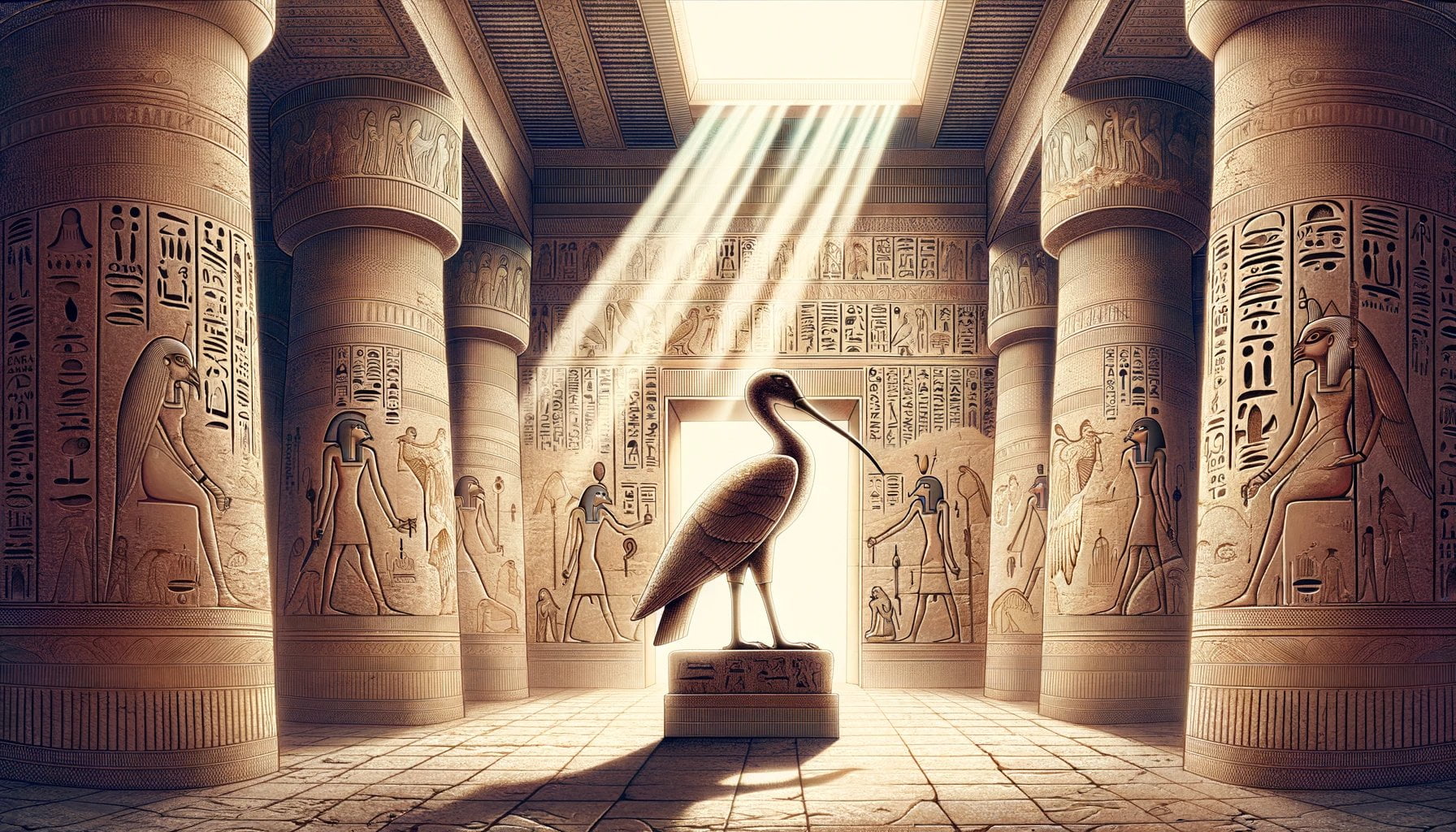
FAQ
Q1: What is the significance of the ibis in ancient Egyptian culture?
A1: The ibis held great significance in ancient Egyptian culture. It was depicted on temple walls and linked to the god Thoth. The ibis was venerated and mummified, with thousands of ibis mummies found in pharaoh’s tombs as offerings to the gods.
Q2: Was the ibis venerated only in ancient Egypt?
A2: No, the ibis was venerated not only in ancient Egypt but also in Greece and Rome. Its association with the god Thoth further solidified its significance in Egyptian culture.
Q3: How were ibises mummified in ancient Egypt?
A3: The mummification process of ibises involved carefully preparing the bird’s body, removing its internal organs, and preserving it with natron, a type of natural salt. These mummified ibises were then placed in pharaoh’s tombs as offerings to the gods.
Q4: Were there other birds that were venerated in ancient Egypt?
A4: Yes, in addition to the ibis, there were other birds that held sacred status in ancient Egypt. Birds such as ducks, geese, flamingos, pigeons, and doves were among the sacred birds revered by the ancient Egyptians.
Q5: What can be learned from the exhibit “Between Heaven and Earth: Birds in Ancient Egypt”?
A5: The exhibit explores the impact that birds had on ancient Egyptian religion, design, and the conception of the state. It emphasizes the veneration of bird mummies in religion and showcases the cultural and religious significance of birds in ancient Egypt.
